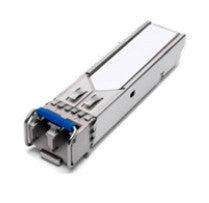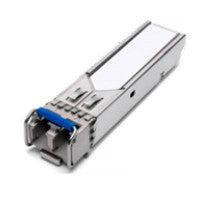Collection: Network Transceiver Modules
-
Extreme Networks Mgbic-Lc01 Network Transceiver Module 1000 Mbit/S Sfp 850 Nm
Regular price $418.62Regular priceUnit price per -
Extreme Networks Mgbic-02 Network Transceiver Module Copper 1000 Mbit/S Sfp
Regular price $248.44Regular priceUnit price per -

Extreme Networks I-Mgbic-Lc03 Network Transceiver Module Fiber Optic 1000 Mbit/S Sfp 1310 Nm
Regular price $862.08Regular priceUnit price per -

Extreme Networks I-Mgbic-Glx Network Transceiver Module Fiber Optic 1000 Mbit/S Sfp 1310 Nm
Regular price $968.28Regular priceUnit price per -
Extreme Networks 10Gb-Sr-Sfpp Network Transceiver Module 10000 Mbit/S Sfp+ 850 Nm
Regular price $1,003.97Regular priceUnit price per -
Axiom 1000Base-Sx Sfp Network Transceiver Module 1000 Mbit/S 850 Nm
Regular price $47.00Regular priceUnit price per -
Axiom Afbr-57R5Aez-Ax Network Transceiver Module Sfp
Regular price $72.29Regular priceUnit price per -
Axiom Aa1419048-E6-Ax Network Transceiver Module 1000 Mbit/S Gbic
Regular price $45.83Regular priceUnit price per -
Axiom Sfp (Mini-Gbic) 4.24 Gbps Network Transceiver Module 4250 Mbit/S
Regular price $72.67Regular priceUnit price per -
Axiom A6516A-Ax Network Transceiver Module 1000 Mbit/S Gbic
Regular price $127.51Regular priceUnit price per -
Axiom 1000Base-T Sfp Network Transceiver Module Copper 1000 Mbit/S
Regular price $61.49Regular priceUnit price per -
Axiom 10Gbase-Sr, Sfp+ Network Transceiver Module 10000 Mbit/S Sfp+
Regular price $69.17Regular priceUnit price per -
Axiom 1000Base-Sx Sfp Network Transceiver Module Fiber Optic 1000 Mbit/S 850 Nm
Regular price $44.67Regular priceUnit price per -
Axiom 10Gb-Sr-Sfpp-Ax Network Transceiver Module Fiber Optic 10000 Mbit/S Sfp+ 850 Nm
Regular price $210.35Regular priceUnit price per -
Axiom 10Gb-Lr-Sfpp-Ax Network Transceiver Module Fiber Optic 10000 Mbit/S Sfp+ 1310 Nm
Regular price $295.52Regular priceUnit price per -
Axiom 10Gbase-Er Sfp+ Network Transceiver Module Fiber Optic 10000 Mbit/S Sfp+ 1550 Nm
Regular price $1,006.07Regular priceUnit price per -
Axiom 10Gbase-Sr Sfp+ Network Transceiver Module Fiber Optic 10000 Mbit/S Sfp+ 850 Nm
Regular price $69.17Regular priceUnit price per -
Axiom 10G-Sfpp-Lr-Ax Network Transceiver Module 10000 Mbit/S Sfp+
Regular price $244.18Regular priceUnit price per -
Axiom 10Gbase-Sr Xfp Network Transceiver Module 10000 Mbit/S
Regular price $244.18Regular priceUnit price per -
Axiom 0231A563-Ax Network Transceiver Module 1000 Mbit/S Gbic
Regular price $57.50Regular priceUnit price per -
Allied Telesis At-Splx40 Network Transceiver Module Fiber Optic 1000 Mbit/S Sfp 1310 Nm
Regular price $243.26Regular priceUnit price per -
Allied Telesis At-Spbd10-14 Network Transceiver Module Fiber Optic 1000 Mbit/S Sfp
Regular price $145.89Regular priceUnit price per -
Allied Telesis At-Spbd10-13 Network Transceiver Module Fiber Optic 1000 Mbit/S Sfp
Regular price $145.89Regular priceUnit price per -
Allied Telesis At-Sp10Sr Network Transceiver Module Fiber Optic 10300 Mbit/S Sfp+ 850 Nm
Regular price $179.92Regular priceUnit price per
























